Latest News
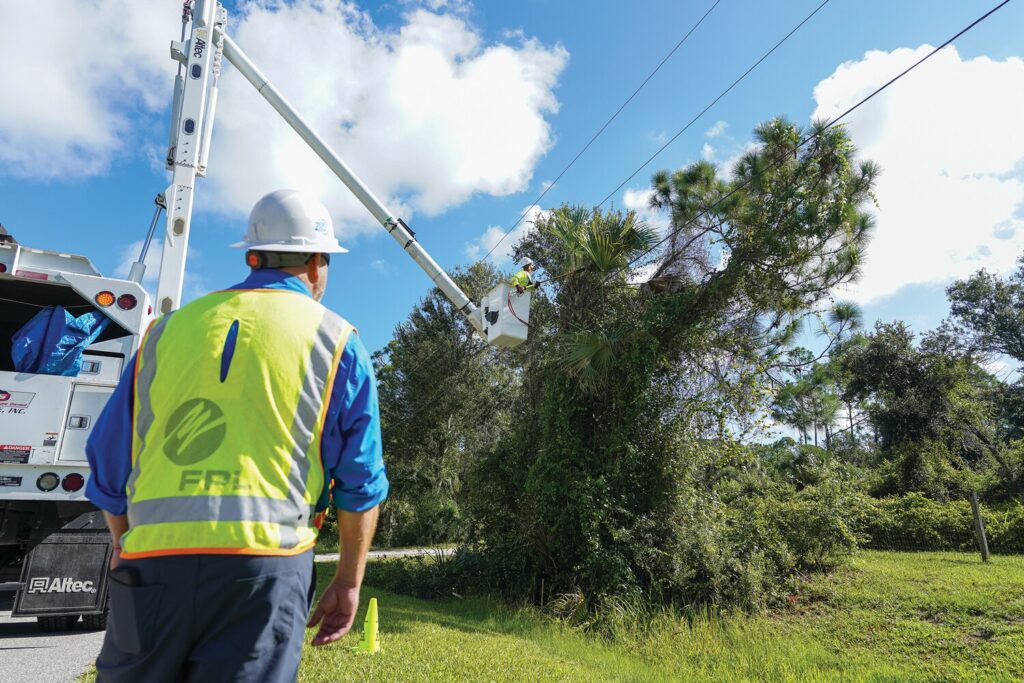
As hurricane season sweeps across the Gulf and Atlantic coasts, emergency crews, linemen, and disaster response teams are gearing up for unpredictable weeks ahead. When nature strikes, access to basic human needs—like safe bathroom facilities—is often the first thing to disappear. That’s where Brief Relief becomes mission-critical.
Why Bathroom Access Becomes a Crisis During Storms
Whether your team is restoring power, clearing roads, or providing aid, bathroom access can be nonexistent during storms. Flooded streets, power outages, and closed public buildings make traditional options unreliable or dangerous.
In hurricane conditions, lack of sanitation leads to:
-
Health risks from improper waste disposal
-
Lower crew morale and comfort
-
Productivity loss from long detours just to find a restroom
Emergency-Ready Bathroom Solutions
Brief Relief provides portable urinal bags and disposable solid waste bags designed to be:
-
Leakproof and odor-sealing
-
Shelf-stable for years—perfect for emergency kits
-
OSHA-compliant and FEMA-accepted
-
Quick to deploy in vehicles, trailers, and field command posts
Our Field Lavatory Systems are trusted by FEMA contractors, municipal utility departments, and disaster relief nonprofits nationwide.
Who Uses Brief Relief During Hurricane Season?
🚨 Utility Crews restoring power in storm zones
🚑 First Responders who need to stay mobile and focused
🚛 Truckers and Contractors rerouted to emergency sites
🏕️ Disaster Shelters and mobile response teams needing safe, hygienic solutions fast
Be Ready Before the Storm Hits
According to the National Hurricane Center, the best time to prepare is before the storm arrives. Disasters don’t wait for you to find a restroom. Stock your crew, fleet, or emergency kits with Brief Relief now—so when the storm hits, your team is covered.
Shop Our Emergency-Ready Sanitation Kits Now
✔ Peace of mind
✔ Portable comfort
✔ Ready when it matters most
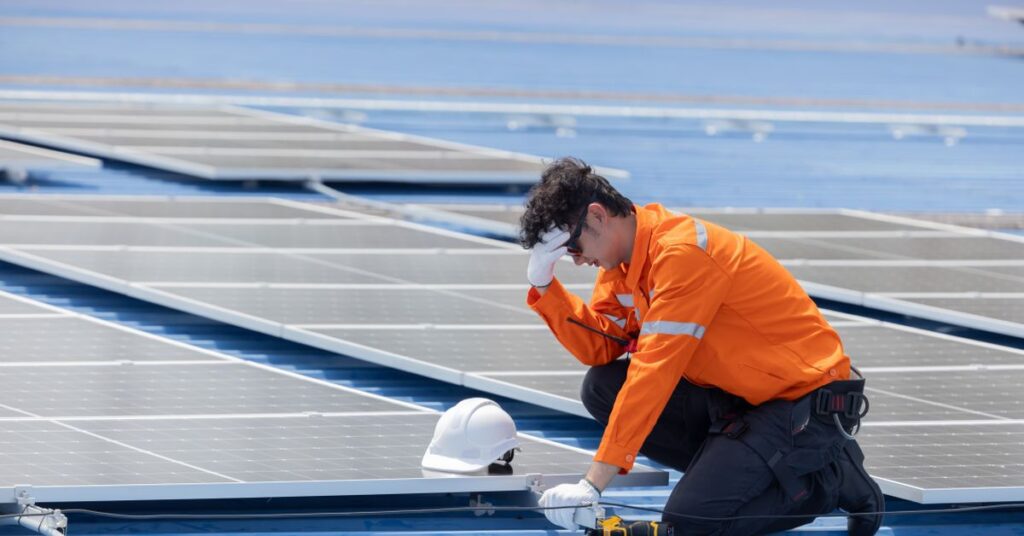
As the summer heat ramps up across the country, utility crews, road workers, and field technicians face more than just long hours—they face sweltering conditions with limited access to restrooms. While hydration is emphasized during hot months, one topic is often ignored: safe, sanitary, and accessible bathroom solutions. That’s where Brief Relief steps in.
The Heat Is On—And So Is the Pressure
When you’re working 10–12 hour shifts in 90+ degree heat, holding it in isn’t just uncomfortable—it’s a hazard. Workers who avoid using the bathroom are more likely to dehydrate, experience fatigue, or lose focus on the job.
Without nearby restrooms, workers often face two poor choices:
-
Leave the jobsite and drive miles to the nearest gas station
-
Hold it in and risk health complications or distractions
Both options lead to productivity loss, health risks, and low morale. That’s why utility companies and contractors are turning to portable waste solutions like those from Brief Relief.
Real-World Use: How a Telecom Contractor Beat the Heat
In 2023, a major telecommunications contractor in Florida equipped their field techs with Brief Relief Disposable Urinal Bags after multiple workers reported symptoms of heat exhaustion from restricting water intake. The result? A 22% decrease in heat-related safety incidents and a noticeable boost in worker satisfaction during service calls.
Why Bathroom Access Matters More in Summer
Encourages Proper Hydration:
When restroom access is available, workers drink more water—lowering the risk of heat stroke.
Avoids Unsafe Conditions:
Workers no longer have to use unsanitary porta-potties or walk offsite.
Boosts Productivity:
Crews can stay on location without wasting time searching for facilities.
Promotes Hygiene Compliance:
Our bags are leakproof, odor-sealing, and contain antimicrobial agents.
Summer Sanitation Checklist for Field Workers
To keep crews safe and compliant during summer field work, every work truck should carry:
✅ Disposable Urinal Bags
✅ Solid Waste Bags
✅ Hand Sanitizer
✅ Electrolyte Packs
✅ Cooling Towels or Shade Structures (when possible)
✅ Gloves for Safe Handling
➡️ See our complete Emergency Sanitation Kits for field crews.
FAQs About Brief Relief in Summer Conditions
Q: Can Brief Relief bags be stored in hot trucks?
Yes. All Brief Relief waste bags are built with durable materials that withstand high temperatures and prolonged storage.
Q: Are the bags safe and odor-free after use?
Absolutely. The absorbent gelling powder neutralizes odor and solidifies liquid waste instantly.
Q: Who uses these during summer months?
We work with utility crews, cable installers, truckers, construction teams, emergency response units, and outdoor event staff.
Don’t Let the Heat Slow Your Crew Down
This summer, ensure your team stays productive, compliant, and comfortable by giving them the bathroom access they need—right where they are.
👉 Shop Brief Relief Now and give your crews the confidence to stay hydrated and focused, no matter how hot it gets.
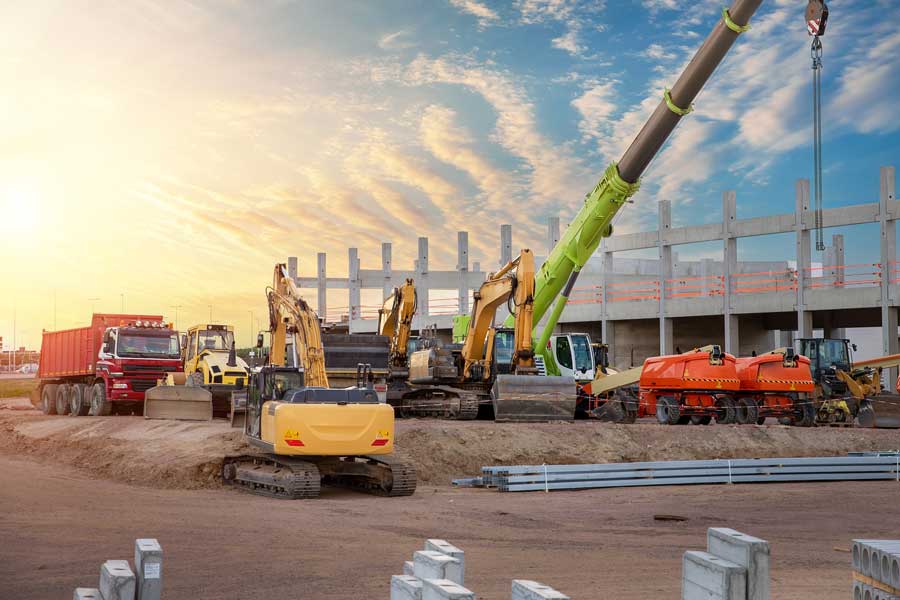
Summer Construction’s Hidden Problem
Every summer, job sites ramp up—more hours, more workers, more productivity… and more logistical problems. One issue that often flies under the radar? Sanitation.
When the nearest porta-potty is a five-minute walk—or worse, there isn’t one at all—time (and productivity) takes a hit. That’s where BRIEF RELIEF comes in. Designed specifically for industrial and field work, BRIEF RELIEF’s portable bathroom kits and urinal bags offer a safe, sanitary, and OSHA-compliant solution right on the jobsite.
The Problem with Traditional Solutions
Most job sites use porta-potties—but they:
- Get hot and unsanitary fast during summer
- Often need to be placed far from where crews are working
- Require rental and maintenance costs
- Lead to downtime (walking, waiting, cleaning hands, returning)
Multiply that by 20+ workers several times a day, and you’re looking at lost hours and money.
BRIEF RELIEF: Built for Industrial Use
BRIEF RELIEF products are made to work where you do. Their disposable urinal and solid waste bags are:
- Puncture- and leak-proof
- Gel-based for odor and bacteria control
- Safe to dispose in any trash receptacle
- Used by the U.S. Military and disaster relief teams
Products like the Liquid Waste Bag (BR608) and Disposa-John (BR500) make it easy for workers to take care of business quickly, safely, and hygienically—without leaving the job site.
Real ROI: Productivity and Compliance
Using BRIEF RELIEF products isn’t just a convenience—it’s a cost-saving tool.
Here’s how:
- Less downtime from bathroom trips
- Fewer health complaints (thanks to better sanitation)
- OSHA-compliant sanitation for field crews
- Lower sanitation costs vs. daily porta-potty rentals
“It saves us about 10–15 minutes per worker per shift,” says a construction manager in Texas. “Multiply that by 50 people and it adds up.”
Summer-Specific Perks
During summer:
High temps make enclosed porta-potties unbearable
Workers may skip hydration to avoid bathroom trips
Heat exhaustion risk increases
With BRIEF RELIEF, workers don’t have to choose between staying hydrated and staying comfortable.
What’s in a BRIEF RELIEF Kit?
Each WAG Bag® or urinal bag includes:
Eco-safe gel that solidifies and deodorizes waste
Sealing zip-top outer bag
Optional toilet paper and hand sanitizer wipe
They’re compact, easy to store in work trucks or toolboxes, and ready when needed.
Final Word
This summer, don’t let poor sanitation slow your crew down. BRIEF RELIEF makes staying compliant, clean, and efficient easy, no matter how remote the worksite.
Be prepared. Be productive. Stay brief.
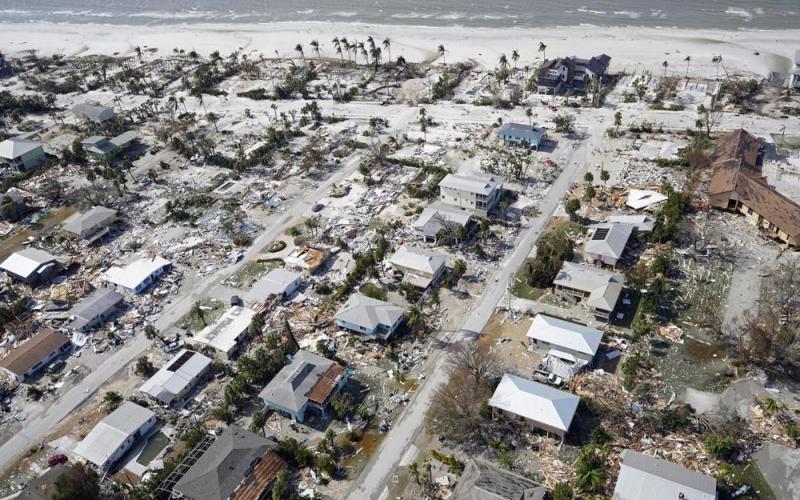
The need for high-quality disaster relief is vital, no matter where you live. Over the past few decades, natural disasters have killed between 40,000 and 50,000 people per year worldwide. Whether communities are leveled by tornadoes, displaced after hurricanes, or left without power after an earthquake, people who experience disaster can’t simply be left to figure it out themselves.
As a company dedicated to providing sanitary, portable toilet solutions for businesses, the military, and first responders, we understand the importance of having the best equipment, materials, and supplies available.
But what do support organizations really need to help survivors through this hardship? Let’s discuss the 6 Rs of disaster relief resources that support organizations need to have ready to bring to disaster sites.
What resources are needed in a disaster situation?
1. Resources – First Aid
First up? First aid. Especially in disasters that result in mass casualties and injuries. Relief organizations must assess the damage and determine the amount/type of first aid kits, medical equipment, and medications needed to treat the most pertinent injuries.
This can be extra challenging with significant infrastructure damage (think – destroyed or blocked roads, no running water, and no electricity).
2. Relief Supplies
Next, aid organizations need to be prepared with enough food and water. People can only go so long without water (no more than three days), so getting enough potable water for drinking and washing becomes a top priority. This can also be challenging to transport when thousands are impacted. The CDC recommends that each person have a gallon of daily water for drinking and sanitation.
Survivors also need access to non-perishable food items that can last without access to electricity. Easy to open, nourishing, and nutritious food must be available. And don’t forget – disasters don’t discriminate by age. Infants and babies need access to formula and soft foods as well.
3. Resettlement Materials
Victims of disasters need access to portable, short-term shelter. Tents, tarps, blankets, and sleeping bags need to be set up in a space where families can be reunified.
This isn’t as simple as it sounds. Especially in areas where infrastructure has been significantly damaged, it can be challenging to find locations for temporary shelters that are safe, accessible, and have access to essential resources like water and sanitation.
4. Restroom Sanitation Resources:
Aid organizations must have a plan to provide portable bathrooms for disaster relief to keep conditions sanitary. That is – unless they want a health disaster to pair with a natural disaster. Some jaw-dropping innovations, such as WAG bags (waste alleviation and gelling bags), portable commodes, and bucket commodes, can make this easier. While not all portable bathrooms are created equal, Brief Relief offers the only NASA-developed gelling agent that deodorizes and solidifies waste within 10 seconds, leaving survivors with an easy, odor-free, sanitary way to go when bathrooms are unavailable.
The fantastic thing about these next-level portable bathroom solutions is that they can be more easily transported than bulky porta-potties or bathroom trailers. They also use eco-friendly disposable waste bags that can be purchased in large quantities and thrown away in the regular garbage. Relief organizations can even provide portable toilet privacy tents or entire portable lavatory systems that can be set up in minutes, serving private restrooms in a pinch.
5. Radios and Response
Landlines and cellular networks can’t be relied on during a disaster. Relief organizations must coordinate efforts, stay updated on emergency alerts, and efficiently make decisions to adapt as the disaster progresses. Communication can make or break success. Radios and satellite phones are indispensable communication alternatives. These devices are designed to operate independently of local infrastructure, allowing communications to continue.
6. Rescue Equipment and Recovery Tools
After a disaster, affected areas are often littered with debris, such as fallen trees, collapsed buildings, and damaged infrastructure. Trucks, bulldozers, and heavy machinery are needed to clear obstructions quickly and safely and repair damaged infrastructure. Large vehicles are also required to transport materials (tents, tarps, and supplies) to disaster-stricken areas and move personnel and supplies. This means being prepared with the correct equipment and the right amount of equipment for the specific disaster.
Responders will also need other recovery tools, such as gloves, ropes, ladders, masks, goggles, and other protective equipment. For some disasters, aid workers use thermal imaging cameras to locate and extract survivors.
When it comes to disaster relief, government relief agencies and other non-government organizations need to be able to count on the quality of their specialized resources and technologies. By equipping organizations like FEMA and NGOs with state-of-the-art medical supplies, innovative sanitation solutions, sustainable shelter options, and efficient logistical support, we empower them to respond effectively and expedite recovery efforts.
Join Brief Relief in supporting disaster relief efforts with innovative, sanitary portable restroom solutions. Together, we can ensure communities receive the essential resources they need to recover and thrive.

Safety is essential on your job site. But have you considered how important security is to your success? Leaving equipment out overnight, poor lighting, and a lack of bathrooms can endanger workers and create long-term costs.
Plus, crime is on the rise at construction sites, including theft, violent crime, and more. And when construction site theft costs between 300 million and 1 billion dollars annually, you can’t afford to ignore taking safety precautions to keep your equipment and employees safe.
At Brief Relief, we’ve spent a lot of time putting our noses in your business. We’ve got your backside when it comes to issues facing the construction industry. Let’s talk about some key issues that put construction workers at risk.
Dangerous neighborhoods
Building in dangerous neighborhoods puts construction workers closer to crime. Construction sites are attractive for criminals due to high-value items that are hard to track, little security, large sites, and poor lighting.
Access to clean bathrooms for construction workers
There are several health hazards on job sites, and bathrooms are a big one. For construction workers, a restroom can be 20 floors down, across a busy street, down the block, or in a disgusting, unsanitary port-a-potty. Considering the average person has to go three times a day (or more), that’s a lot of wasted time and unnecessary exposure to waste. It’s also common for a worksite to not meet OSHA requirements, risking your worker’s health.
Plus, peeing on the job site can be a PR nightmare. Without portable toilets for construction sites, companies can face public relations issues created by employees relieving themselves where they shouldn’t.
Construction Sites are a Magnet for Criminals.
Once crews clock out, materials like copper, lumber, tools, and expensive machinery are often left unattended, especially if there aren’t any security measures on the site. (And many materials are priced at an all-time high due to shortages.)
Thieves take advantage of locations with minimum security and lighting, which offer the opportunity for maximum profit. And considering that job sites are often left unattended after hours, it’s too good to be true for criminals who can turn construction materials for a profit.
Jobsite Security Solutions
A few solutions are oh-so-simple!
Lighting
Light it up! Ensuring your site is well-lit is simple, but it deters thieves from lurking in the dark. Floodlights and motion sensors go a long way to increase security. Just make sure your lights don’t obscure any security cameras if you have them.
Security Systems
You’d be surprised at how many security systems can be installed without a professional. Many portable surveillance system options can be moved as your project advances. With the increased surveillance and technology capabilities, you can get some excellent options for less than you think.
Fences and Locks
If you have a budget, add a fence. It will take away the opportunity from criminal opportunists. If you want to level up, you can add a fence covering that obscures your site from view, making it more difficult to see potential items to steal after hours. Even better, secure valuable materials and tools at the end of each shift. This smart safety measure could spare you from significant financial losses.
Access to On-Site Bathroom Solutions
Give your workers access to a nearby bathroom to save time and increase sanitation. This will keep your workers safe and avoid any unfortunate public urination disputes.
As the top manufacturer of worksite bathroom solutions, Brief Relief products are the safest way to go to the bathroom when no bathrooms are available. Our portable bathroom solutions, such as the Disposable Urinal Bags or the Lavatory System, offer a simpler, more affordable alternative. Plus, our biodegradable waste bags are not only sanitary- they’re OSHA certified.
Stay Safe!
Every construction team wants increased safety, decreased loss, and increased productivity. Implementing measures like adequate lighting, secure fencing, and access to on-site bathroom solutions can reduce risks while making your worksite more productive and safe.
At Brief Relief, utility workers, construction crews, telecommunication techs, and clean energy workers trust our products as part of their daily routine when they can’t quickly and safely access a restroom.
Explore how our products can work for you and your crew!
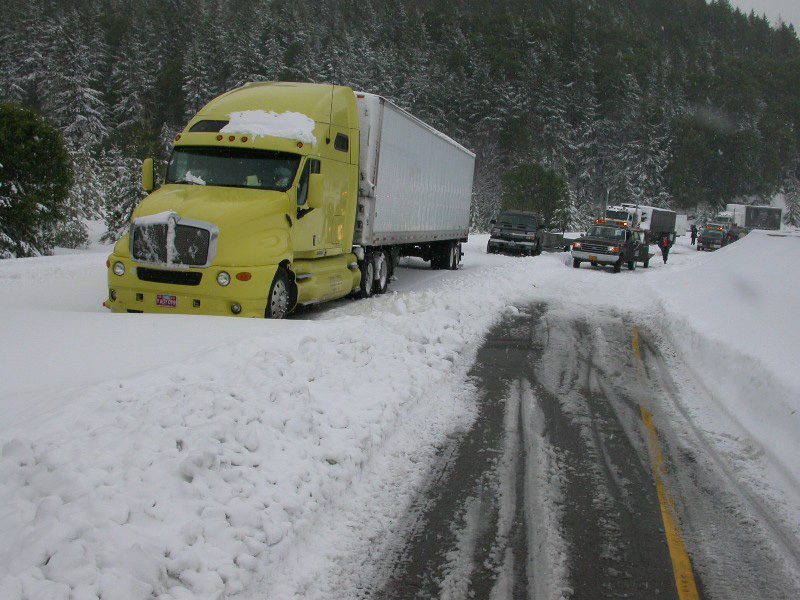
This comprehensive winter guide will feature vehicle readiness tips, winter maneuvering strategies, and essential emergency items. Brief Relief provides portable bathroom and shelter solutions designed specifically for professionals who are constantly on the move.
Impact of Winter Storm Heather 2024 and the Importance of Preparedness
Winter Storm Heather 2024 was a stark reminder of winter weather’s uncertain and often hazardous nature. Truckers and first responders faced formidable challenges as the storm rendered roads impassable and disrupted critical operations. So much so that a 70-mile stretch of Interstate 80 was shut down. Closures like this stranded many semi-trucks and left many idle, leading to considerable economic repercussions for trucking companies, as idle trucks meant drivers weren’t earning, and companies weren’t making money.
Winter Storm Heather highlighted the critical need for preparedness for truckers, emergency responders, and disaster relief crews. Extreme conditions, from heavy snowfall to icy roads, pose personal safety risks and hamper crucial operations. Being prepared means quickly and effectively responding to ensure the safety and well-being of frontline workers.
Vehicle Readiness: Essential for Commercial Driver Safety
For those who spend their workdays on the move, a vehicle is more than just a mode of transport—it’s a central hub of activity, a haven from the winter chill, and, at times, the only source of warmth. Ensuring your vehicle is winter-ready is critical to the safety of commercial drivers.
Key steps include:
- Regular Vehicle Inspections: Checking the engine, brakes, tires, windshield wipers, fluid levels, and battery should be part of your routine since winter places extra demands on your vehicle.
- Fuel Management: Always keep your fuel tank at least half full to prevent the fuel line from freezing and ensure you’re ready for unforeseen delays.
- Heating and Insulation: Confirm that your vehicle’s heater is functioning correctly. Should the heating system falter, keep thermal blankets on hand for warmth.
For truck drivers, road workers, first responders, and disaster relief crews, winter brings many challenges that demand rigorous preparation. When snow and ice transform the landscape, these individuals are the lifelines of our roadways, and their safety and comfort are paramount.
The Foundation of Your Kit: Basic Necessities
A well-prepared roadside kit is essential for truckers and road crew professionals who contend with the challenges of winter travel. Your kit should equip a flashlight for those dark, wintry nights, a multi-tool for on-the-fly repairs, and a pocket knife, which can be crucial for cutting seat belts in an emergency. A comprehensive first-aid kit is a must-have, packed with band-aids, bandages, gauze, tourniquets, and ointments to manage burns and facilitate healing.
Given the unpredictable nature of winter weather, it’s essential to have non-perishable, energy-rich food items on hand. Protein bars, MREs (Meals, Ready-to-Eat), nuts, and candy can be vital in keeping energy and morale levels up if you’re waiting for help to arrive. Your kit should include thermal blankets, heat packs, a heavy jacket, and gloves to keep warm. Additionally, a compact snow shovel and traction mats are essential for digging out your vehicle and gaining traction on slippery surfaces.
Such a kit keeps you prepared for the unexpected, helping maintain safety and comfort until conditions improve or assistance reaches you.
Portable Toilets: A Non-Negotiable for Roadside Sanitation
Among these essentials, one must pay attention to a crucial component: the need for proper sanitation. Portable toilets are not just a convenience but necessary for truckers and road crews who spend hours in remote locations. The Waste Bag by Brief Relief is a prime example of a portable toilet solution tailored for truckers. It’s discreet, easy to use, and environmentally friendly, with a gelling agent that solidifies waste and neutralizes odors. This level of sanitation is critical, not just for personal hygiene but for environmental health as well.
Advanced Preparation: Portable Toilets for Truckers
A more advanced kit is advisable for those who may find themselves stranded or working in severe weather conditions. An enhanced kit incorporates the previously mentioned Waste Bag along with a portable toilet or portable toilet shelter designed for prolonged usage. These units are sturdy, offering a higher level of comfort and convenience. They are exceptionally vital for truckers on the road for days, road workers, and emergency personnel who work long shifts in stationary locations.
Why Prioritize a Portable Toilet?
The presence of reliable portable toilets for commercial drivers serves several critical functions. Having a portable toilet shelter ensures that drivers and crews remain on-site during emergencies, maintaining operational continuity. It prevents the interruption of essential tasks for sanitation needs and safeguards against the health risks associated with unsanitary conditions.
Environmental Responsibility and Comfort on the Road
Brief Relief designs portable toilets with the environment and user experience in mind. By providing a clean and private space, they uphold the dignity of workers while also preventing waste from contaminating nearby lands and waterways, which is crucial in winter when the spread of pathogens can be a concern.
Ready for Anything
As we continue to face the challenges of winter, having a well-thought-out roadside kit, complete with a reliable portable toilet solution, is not a luxury—it’s an essential aspect of road safety. By choosing products like Brief Relief’s Waste Bag and portable toilets, truck drivers, road workers, first responders, and disaster relief crews can remain focused on their vital roles, knowing their needs are met with solutions that offer safety, privacy, and respect for the environment. These products reflect a deep understanding of the unique requirements of mobile workers, such as truckers and emergency responders. Brief Relief’s commitment lies in providing technical solutions that genuinely improve working conditions in the field.
Winter Storm Heather 2024 showed us how powerful nature can be and how important it is to be ready for anything. Being prepared is vital for people in the trucking, emergency response, or disaster relief sectors. Being prepared means making sure your vehicles can handle the harsh winter weather. You must also have the right tools and supplies to keep you safe and comfortable. Make sure to visit the Brief Relief Shop for waste bags, portable bathrooms, and commode systems. Workers who prepare well with essential items and solutions can confidently face winter challenges.
Frequently Asked Questions
- How do portable toilets and shelters from Brief Relief enhance winter safety?
- Portable toilets and shelters provide a safe, warm, and private space for workers, protecting them from the cold and ensuring their comfort and hygiene.
- Why are Vomit Bags and Wag Bags important in winter work environments?
- They offer a convenient and hygienic solution for workers who might experience motion sickness or have limited access to traditional bathroom facilities, especially in remote or cold areas.
- What role do Urine Bags play in winter worker safety?
- Urine bags are a practical solution for quick and hygienic relief, particularly beneficial for workers in areas where traditional facilities are not accessible.
- How does the availability of portable sanitation solutions impact worker morale?
- Providing these facilities demonstrates an employer’s commitment to worker health and safety, which boosts morale and productivity.
- What are some key considerations for integrating Brief Relief products into a winter safety plan?
- Assessing workforce needs, ensuring easy access, and maintaining these facilities are crucial for their effective integration into winter safety protocols.
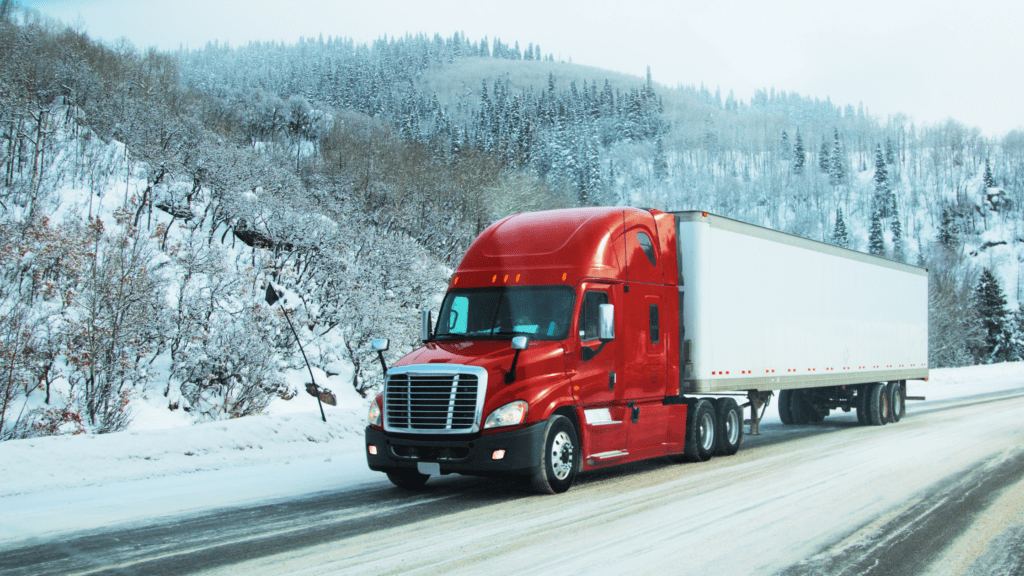
Winter weather can be unpredictable and unforgiving, especially for truck drivers who spend long hours on the road. Snowy conditions can be particularly treacherous, leaving truckers stranded and in need of survival know-how to stay safe and comfortable until help arrives. It’s in these chilling scenarios where preparation and the right gear can mean the difference between mere discomfort and deathly consequences.
Understanding the Risks and Challenges of Being Stranded in Snow
Winter truck driving poses unique risks and challenges for truckers, especially when they become snow-stranded. Snowstorms can make roads impassable and leave drivers isolated for extended periods of time. This can lead to dangerous situations such as freezing temperatures, limited food and water supplies, and lack of communication. Essential trucker gear, like a well-stocked trucker survival kit, is crucial in these situations. Understanding these risks and challenges is the first step in preparing for and overcoming them, ensuring truckers can stay safe while stranded.
Practical and Actionable Safety Tips for Truck Drivers in Snowy Conditions
When facing snowy conditions as a truck driver, safety should be your top priority. Here are some practical and actionable tips to help you navigate through winter weather:
- Stay informed. Keep track of weather updates and road conditions before starting your drive. Use reliable sources and be aware of any advisories or warnings.
- Slow down and increase following distance. Snow and ice make the roads slippery, so it’s essential to drive at a reduced speed. Increase your following distance from the vehicle in front of you to give yourself more time to react to any unexpected situations.
- Take breaks and rest when needed. Driving in snowy conditions can be physically and mentally draining. Take regular breaks to rest, stretch, and stay hydrated.
- Plan your route. Avoid routes that are prone to snow drifts or low visibility. Opt for well-maintained and frequently plowed roads.
- Be prepared. Equip your truck with winter tires, chains, and proper traction devices. Have a well-stocked trucker survival kit that includes items like extra blankets, warm clothing, non-perishable food, an alternative restroom solution and a reliable communication device.
Trucker’s Toolkit for Tackling the Cold
Truck driving in the winter requires having essential items in your rig for emergency situations. These items can make a significant difference in keeping you safe and comfortable until help arrives:
Emergency Blankets: Maintaining body warmth is crucial. Emergency blankets and extra warm clothing can provide life-saving insulation when stranded in cold conditions.
Snow Chains: These are crucial for gaining traction on snow-covered roads, enabling movement to a safer location.
Shovel and Ice Scraper: Necessary for clearing snow around your vehicle and ensuring visibility.
Porta-Quick Utility Pack Commode: During weather-induced halts on the road, having access to restroom facilities is a luxury that truckers aren’t often afforded. This portable, easy-to-use, toilet system from Brief Relief offers truck drivers a clean, sturdy, and easy-to-set-up restroom solution on the go.
Being prepared with these items can provide peace of mind, ensuring you’re ready to tackle any emergency situation.
Staying Safe While Snow-Stranded
If you do happen to get caught in a snowstorm, it’s necessary to stay inside your vehicle to maintain warmth and safety. Running the engine intermittently to warm up while conserving fuel is a wise strategy. Ensure that the exhaust pipe is clear of snow to prevent carbon monoxide poisoning. Staying active within the truck— like moving your arms and legs or performing exercises that require little space — to maintain circulation can also help keep the cold at bay.
In times of distress, keeping in touch with fleet managers and other drivers is a must. Share your location and situation with others, and keep a charged cell phone handy at all times. Having a portable charger or power bank can be a literal lifesaver.
Conclusion
In the face of snowy conditions, truck drivers need to be prepared and take the necessary precautions to stay safe and warm. Understanding the risks, practicing safe driving techniques, and stocking essential items in your truck can make all the difference in emergency situations.
Brief Relief’s products are designed with outdoor and emergency situations in mind, embodying the brand’s commitment to ensuring safety, hygiene, and comfort, even in adverse conditions. When facing winter’s wrath, having access to sanitary restroom solutions can provide a much needed sense of relief amidst the unpredictable. Stay warm and stay safe out there!
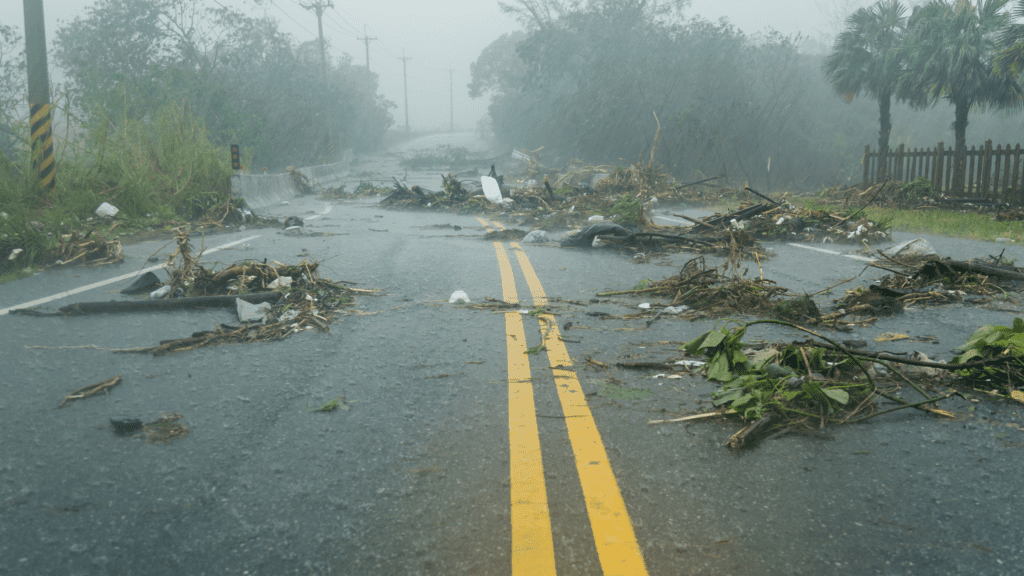
Hurricanes represent one of the greatest threats in nature, capable of extensive destruction and loss of life. Given the potential severity of these events, hurricane preparation is not just beneficial, but crucial. Effective readiness extends beyond mere planning—it requires the acquisition of critical tools and resources to safeguard lives during these extreme circumstances.
In recent years, we’ve witnessed an alarming increase in the frequency and intensity of hurricanes. Places that aren’t typically affected have seen some activity. In fact, New England was just recently impacted by Hurricane Lee. Climate change has brought about more powerful storms, making it crucial to adapt and strengthen our preparedness.
In this article, we’ll explore five of the latest hurricane tools that should be included in any emergency preparedness kit. These innovations can be the difference between riding out the storm safely and facing unnecessary risks.
1. SOL Scout Survival Kit
The SOL Scout Survival Kit is a compact collection of crucial survival items designed for worst-case scenarios. The kit includes a heat-reflective two-person survival blanket that keeps you warm, a mini rescue flash signal mirror that broadcasts your location up to 10 miles, and a slim rescue howler whistle that can be easily heard over long distances. It also contains a compass, duct tape, and a fishing/sewing kit, making it an all-in-one solution for various survival needs during a hurricane.
2. ZOLEO Satellite Communicator
During a severe storm, regular communication channels like cellular networks might fail. The ZOLEO Satellite Communicator can be a lifesaver in these situations. This device connects with your smartphone via Bluetooth and allows you to send and receive messages anywhere in the world using the Iridium satellite network. It also has an SOS button for emergencies which alerts the GEOS International Emergency Response Coordination Center.
3. UCO Stormproof Match Kit
The UCO Stormproof Match Kit is a waterproof case that includes 25 matches and 3 strikers. The matches are windproof and waterproof and will burn for up to 15 seconds, even after being submerged in water. This tool is essential for starting fires for warmth, boiling water, or cooking food when other ignition sources are unavailable.
4. Brief Relief Liquid Waste Bag
Maintaining sanitary conditions during a hurricane is crucial to prevent the spread of diseases. The Liquid Waste Bag from Brief Relief is a sanitary, triple barrier bag and liner for liquid waste. Each pack is individually wrapped and equipped with gel activated technology, instantly transforming urine into a convenient, disposable gel. It’s a necessity for situations when plumbing functionality is compromised.
5. LifeStraw Peak Water Filter Straw
Clean drinking water can be hard to come by during a hurricane. The LifeStraw Peak Water Filter Straw is a compact tool that filters up to 4,000 liters of contaminated water without chemicals or batteries. It removes 99.9999% of waterborne bacteria and 99.9% of waterborne protozoan parasites, ensuring you have access to safe drinking water in an emergency.
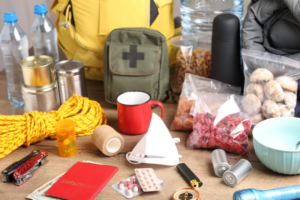
By incorporating these tools into your hurricane prep kit, you can significantly improve your chances of surviving and recovering from a hurricane. Preparation is key, and being equipped with the right tools can make all the difference when it comes to weathering the storm.
Don’t wait for the storm to hit before you start preparing. Visit Brief Relief’s website today and equip yourself with the essentials you need to weather any storm.
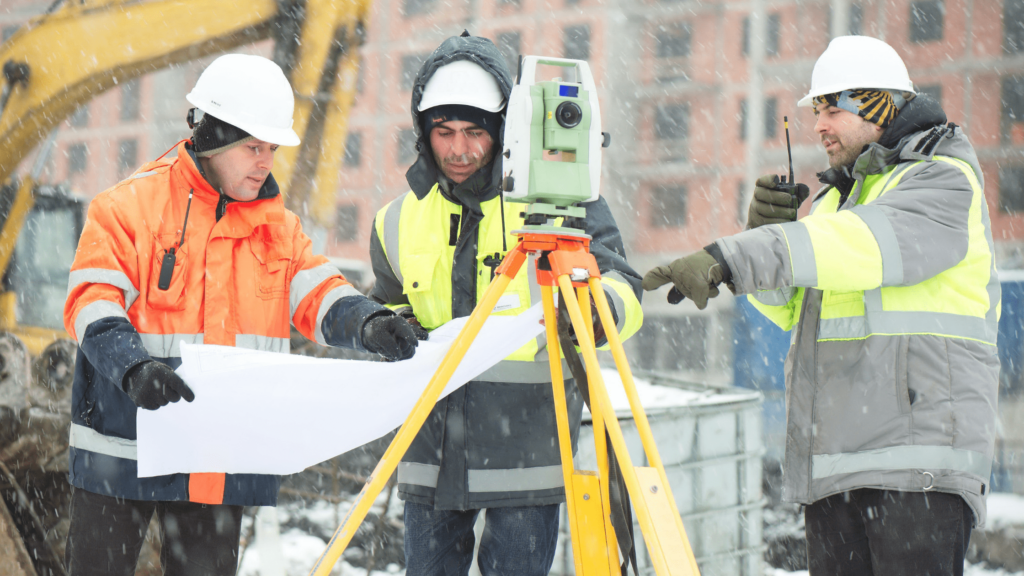
As the winter months approach, ensuring the safety and well-being of workers exposed to cold temperatures becomes a top priority for employers. Cold weather can pose significant risks to employees, ranging from frostbite and hypothermia to slips and falls on icy surfaces. Properly educating employees about the potential hazards and necessary precautions is crucial for preventing cold-related illnesses and injuries. In this blog post, we’ll explore essential tips for employers on how to keep their workers safe during cold weather.
Educating Your Employees About Cold-Weather Risks

Education is a foundational step that must be considered when keeping workers safe in cold temperatures. Properly educating employees about the potential hazards and necessary precautions is crucial for preventing cold-related illnesses and injuries. Here’s a closer look at how to effectively educate your workforce:
- Explain what cold stress is: Help employees understand cold stress — the body works hard to maintain a stable core temperature in cold conditions, and prolonged exposure can lead to serious health risks such as frostbite and hypothermia.
- Recognizing early signs of trauma: Teach employees to recognize the early signs of cold-related illnesses. Symptoms of frostbite include numbness, tingling, or discoloration of the skin. Additionally, hypothermia can manifest as shivering, confusion, and slurred speech. Encourage workers to find shelter and report any discomfort immediately, even if symptoms are minor.
- The importance of dressing appropriately: Educate your employees about wearing proper clothing to trap and conserve body heat. For example, moisture-wicking fabrics, clothes made of insulating materials, and thick fabrics are great for cold outdoor weather. However, they may need to wear more than just these types of clothing. Consider the materials to be worn. For example, merino wool won’t draw body heat from the skin when wet. Employees should add layers and protect extremities with items such as additional jackets, gloves, scarves, hats, beanies, etc.
Monitor Weather Conditions

Stay informed about weather forecasts in your region. Thankfully, modern technology — such as satellite data — can predict extreme weather patterns (such as snowstorms) days, if not weeks, in advance. You can receive this information by tuning into your local news broadcasts and receiving up-to-date and accurate weather predictions for your geographic area.
The safety of your employees comes first. When icy conditions are predicted, consider delaying work or implementing shorter shifts. The risk of cold-related injuries increases in severe cold weather. Prioritize safety over productivity, you’ll abide by OSHA guidelines, and boost employee morale.
In addition to monitoring weather conditions, you can also develop a weather policy. Create a clear and well-defined cold-weather policy that outlines how the company will respond to various weather conditions. This policy should include criteria for determining when it’s safe to work in cold temperatures and when adjustments must be made.
Provide Adequate Breaks

When working in cold temperatures, providing employees with adequate breaks isn’t just about comfort — it’s a crucial safety measure that can help prevent cold-related illnesses and injuries. Adequate breaks allow workers to warm up, maintain their core body temperature, and recharge their energy.
Frequent and more prolonged breaks are better than shorter ones in cold weather conditions. Also, encourage warm-up periods for employees to engage in physical exercises (e.g., jumping jacks). Not only is this good for their physical fitness, it increases blood circulation and raises body temperature.
Granting ample breaks also gives workers a mental breather, which helps reduce the stress and anxiety of working in harsh weather conditions.
Encourage Hydration and Nutrition
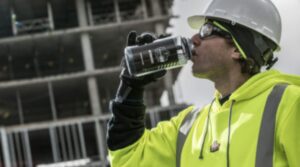
Drinking fluids and consuming warm, nutritious meals can help the body generate heat and sustain energy levels. Ensure employees have access to hot beverages (such as hot cocoa, tea, and coffee) and warm, nutritious snacks and meals.
For example, you can set up a table area to place your hot beverages (in insulated canisters/beverage dispensers). Hot meals can be stored in insulated packages. You can even place snacks that are dense in nutrition, such as protein bars and Clif bars.
Address Slip and Fall Hazards
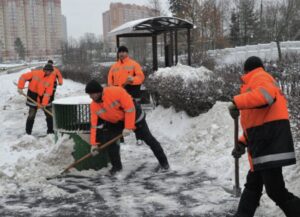
Image source:https://stratus.hr/resources/winter-work-safety
Due to icy and snowy surfaces, the risk of slips and falls escalates dramatically and makes a big safety issue. These incidents result in injuries and can disrupt operations and decrease worker morale. Employers must prioritize strategies that effectively address slip and fall hazards to ensure a safe and productive workplace.
Maintain clear pathways by promptly removing accumulated snow and ice. Use snow shovels or snow plows to make walkways, entryways, and parking lots accessible in hazardous conditions. You can also encourage your employees to wear footwear with slip-resistant soles to ensure a safe workplace. Remember, proper footwear can make all the difference in icy conditions by enhancing grip and traction on slippery surfaces. Appropriate footwear provides stability, reduces the risk of falls, and contributes to worker safety.
Have an Emergency Kit
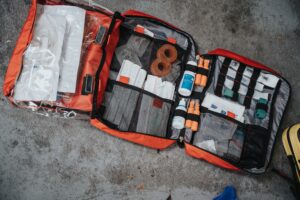
An emergency kit empowers workers and supervisors to respond effectively in urgent situations, potentially minimizing the impact of injuries or health issues. Here’s what you can include in your emergency kit:
- First aid supplies: Provide a first aid kit that includes items such as bandages, antiseptic wipes, adhesive tape, gauze, and trauma scissors. These essential items can quickly address minor injuries and prevent infection.
- Hand and foot warmers: These small packs generate heat and quickly relieve the symptoms of oncoming frostbite.
- Flashlight and batteries: Ensure workers can illuminate their surroundings during low light or power outages.
- Whistle: A whistle can serve as a signal for help, especially when visibility is limited.
- Disposable waste bag: In some cases, your workers may not have easy access to the restroom, or maybe traveling to a nearby toilet would expose your workers to more severe conditions. For scenarios like this, a disposable waste bag can provide your workers with the necessary convenience, safety, and hygiene to take care of their needs.
By equipping employees with knowledge, proper gear, and effective emergency measures, employers can shield them from harm and empower them to face cold-weather challenges confidently, all the while prioritizing worker safety. Your commitment to their well-being lays the foundation for a resilient and productive workforce, fostering a workplace where safety is paramount. If you want to equip your employees with the essential gear necessary for working safely in cold temperatures, browse our portable restroom solutions here.
